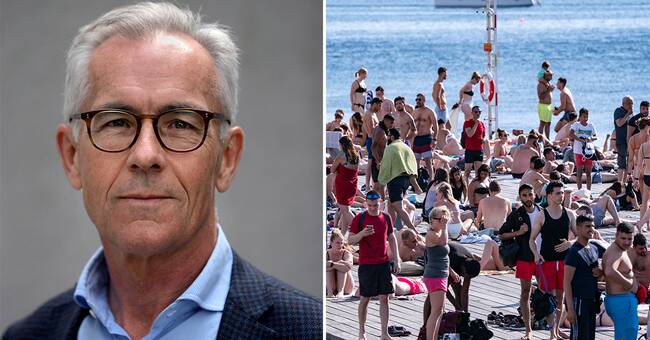In Sweden, there was a significant decline in infection during the warmest months of the year last year, before the spread of infection picked up again in the autumn.
It is already known that influenza viruses and other coronaviruses are affected by the weather - that is why colds and seasonal flu are much more common during the winter.
Temperature does not affect
Jan Albert, professor of infection control at Karolinska Institutet, has researched how weather affects viruses.
He emphasizes that it is not the high temperature that affects the virus.
- It does not have much direct impact, if you do not get up to 50-60 degrees, says Jan Albert.
He also does not believe that sunlight is a major brake on infection.
- There are reports both for this virus and others that UV light is inactivating (killing, editor's note), and it has long been used in laboratories to decontaminate surfaces.
But the question is how much it affects the spread of infection, which mostly happens indoors.
Humidity and contact
Something that is believed to have a greater impact is the humidity.
During the Swedish winter, the outdoor air is drier.
Heating of homes and premises also contributes to lower humidity.
It facilitates the transmission of the virus between different hosts.
- This makes aerosols and drops easier to fly, says Jan Albert.
In addition, there have been reports that the mucous membranes' resistance to the virus is worse during the winter.
This summer's changing social patterns are also a likely factor - it is more difficult for the virus to spread in an outdoor environment.
- None of these is a single explanation, but together it will be a seasonal variation.
What without all this is most important is difficult to know, states Jan Albert.
- My assessment is that it is not the outdoor climate itself that is the thing, most of the spread of infection takes place indoors.
The outdoor temperature is a marker for all these factors.
Seasonal virus in the future
Jan Albert predicts that the coronavirus that causes covid-19, SARS-CoV-2, will become a more seasonal virus in the future.
- If it is a pandemic, the seasonal variations can be partially eliminated. But last summer we had it quiet and it is likely that we will be there again this summer. When we are past the pandemic, it will surely be in the winter that we see infection.

